Drawings and schemes for the construction of one-story houses from a bar
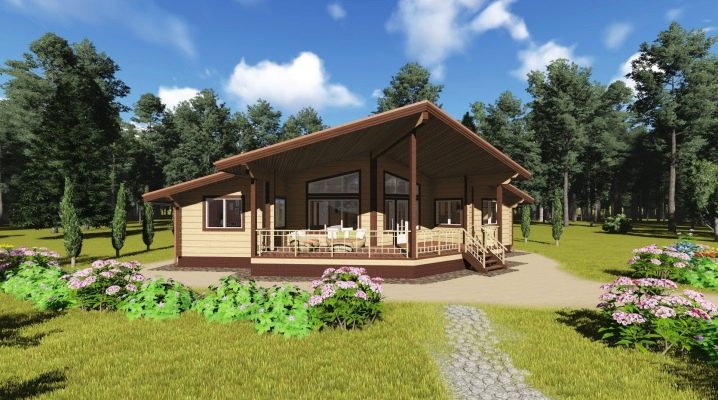
No matter how simple this or that option for building a house may seem, there are many potential problems and just subtleties that must be taken into account. There are a number of peculiarities in the construction of buildings with a height of one floor. When using a bar, another specificity is added that cannot be ignored.
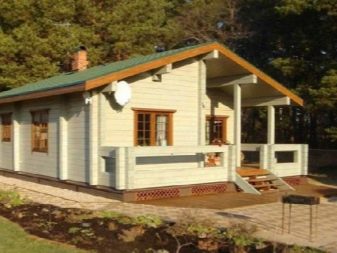
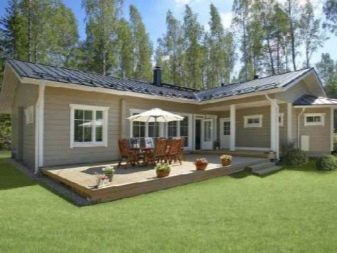
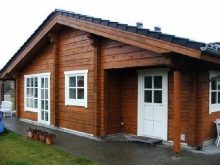
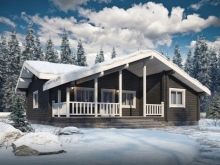
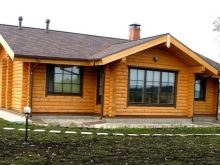
Peculiarities
One-story houses from a bar have one extremely important feature - they are made from elements of strictly fixed length, which in principle cannot be changed arbitrarily. Only a rational sawing scheme and a careful approach to the layout of parts allow us to somewhat correct the situation. It is important to take into account that from the standard length of the timber brought from the sawmill, some more part will have to be taken away, which is spent on cutting.
If one of the walls is made smaller, the remaining lumber is required to be used in the construction of other planes in order to avoid wasteful costs. Therefore, the usual approach, according to which the general increase in the area makes it easier to place all the necessary objects, does not work here.
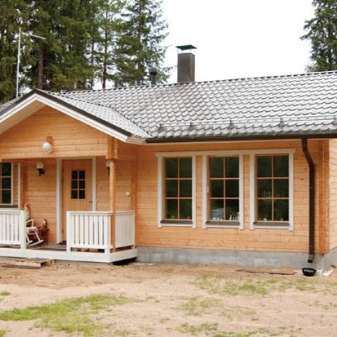
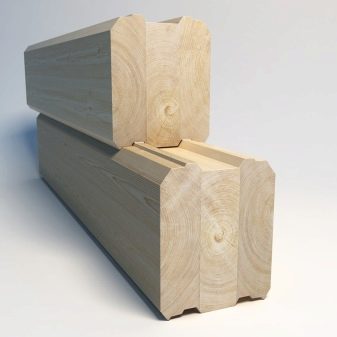
Wooden buildings from a bar, if their total territory is excessively increased, begin to resemble a bee hive. Buying a very long bar, you still need to cut it and carefully work with the leftovers. The rational length of beams used in ceilings ranges from 450 to 550 cm. The exact figure depends on the depth of the inset and the type of material used. As a result, a detailed scheme has to be drawn up before the start of work, and so that not the slightest part of it changes afterwards.
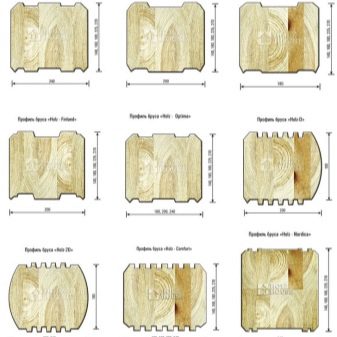
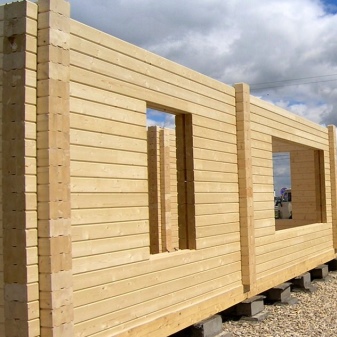
They begin work with the formation of a scale model of the house, without taking into account the consumption of material for the notch. So it is much easier to choose a competent layout, sorting through various options.
Later, the model is transferred to paper, and the drawing should already be painted:
- total wall thickness;
- produced hemming;
- planned material leftovers;
- total calculation;
- consumption of forest raw materials.
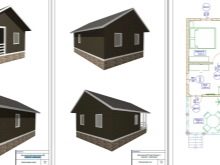
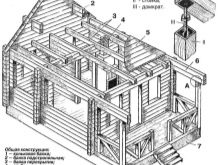
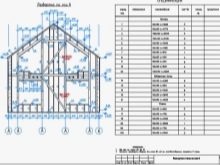
The response of partitions to changes in humidity and air heating must be synchronized with the rest of the building. Optimally meets this requirement a wooden beam with a thickness of at least 5 cm. In order for the installation of door blocks to occur correctly, the thickness of the partitions must be at least 10 cm. This value does not include the finishing layer.
As always, the windows face the lightest side (almost always east or south).

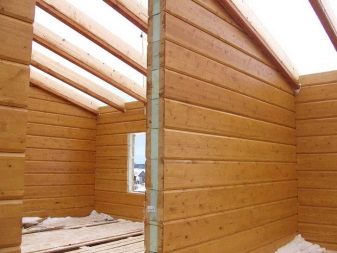
Be sure to take into account what is the location of existing and future buildings, even temporary or seasonally used. Drawing up a construction scheme involves leaving a reserve space for the formation of garden paths. Usually, the facades of houses and adjacent buildings are placed on the same line, exceptions are extremely rare. You should take care of the proportionality of the sizes of all buildings created. Only when all these points have been worked out, it makes sense to determine the purpose of individual premises.

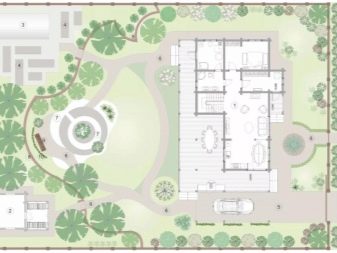
Projects
Lumber wooden houses are much more popular now than classic products in the form of log cabins. Even the quality factor and heat are no worse if modern technologies are used correctly. And yet, great attention should be paid to the choice of a suitable material. In most cases, a residential building for permanent residence is built from coniferous wood.
Most projects involve the use of pine, which is superior to:
- spruce - by visual beauty;
- fir - by strength;
- larch - for ease of processing and load on the foundation;
- cedar from Siberia - at the total cost of lumber.
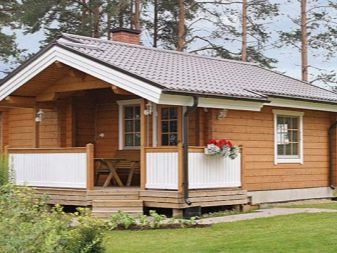
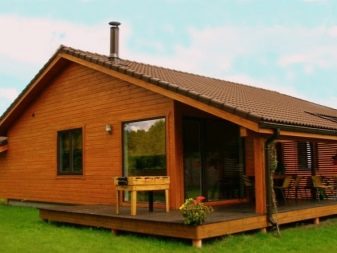
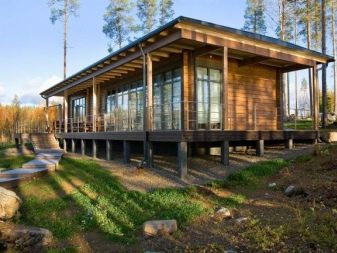
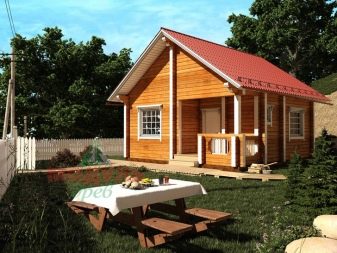
Designing begins either with a general drawing or with an exemplary photo of the option you like. (in this case, explanations can be introduced). The sketch of a house, both a summer cottage and an urban one or located in a cottage village, should be made as detailed as possible, this will simplify the work of designers, and then builders. In a large building (10 by 10 or 9 by 12), you can place two bedrooms at once, an additional storage room and divide the sanitary unit without compressing its parts. Attention should be paid to the location of the boiler room and home laundry; in the home of modern responsible people, a site for a gym is almost always provided.
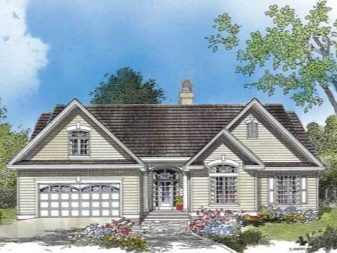
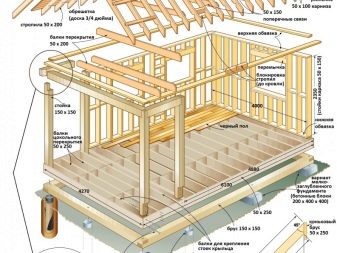
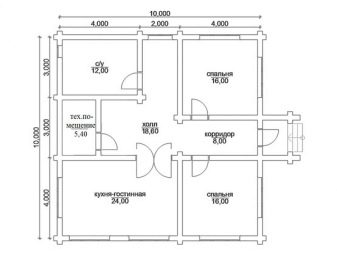
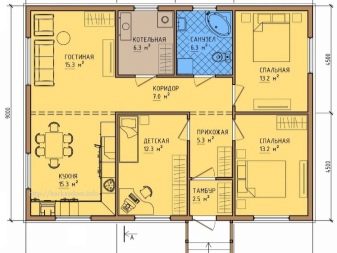
Even in houses with dimensions of 6 by 4, you can select the appropriate corner if you very scrupulously approach the organization of space or provide for the formation of an attic. To make your work easier, after choosing the location and functionality of the rooms, you need to draw corridors that allow everyone to make their lives more convenient. Separate parts of the drawings are connected, and this is how a preliminary diagram is obtained. If the required footage turns out to be too large and does not fit in a small 6 x 4 house, you should actively use the space of the second or basement floor.
In structures of small size, spiral staircases are most often formed.
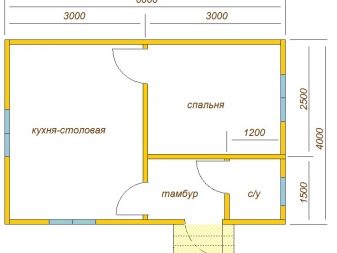
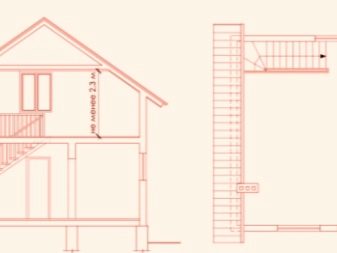
A classic 1-storey house can be equipped with an unheated attic. For a summer cottage, used only seasonally, this option turns out to be quite economically justified. On the drawings, each floor is entered separately, that is, along with the general plan, there should also be a floor drawing.
If the developer does not provide such documentation, this is a good reason at least to check his work more carefully. A veranda in a 10 x 10 log house can cover one or several facades. Considering the peculiarities of the Russian climate, solutions with large panoramic windows around the entire perimeter are not always acceptable.

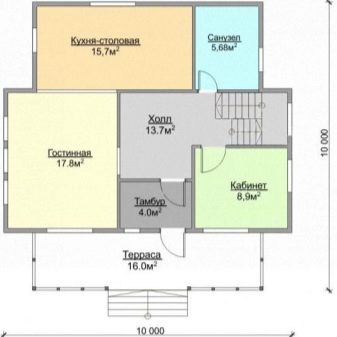
On the open terrace, decorating railings are used, the height of which varies from 100 to 150 cm above the floor. Alternatively, a similar rise of the bar can be used, from which the drawing is carefully cut. Open extensions in a 7 by 8 house can have glazing, this helps protect the room from precipitation. The type of roof is selected individually, taking into account the characteristics of the territory and design nuances. In most cases, a gable roof is installed over structures 9 x 9 and 10 by 10 m.
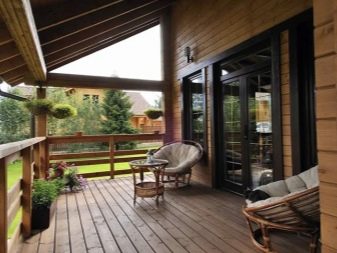
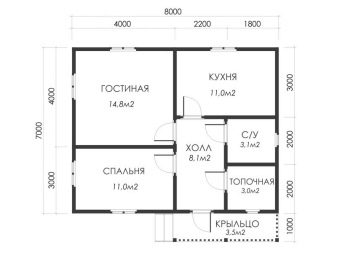
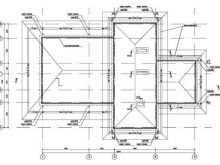
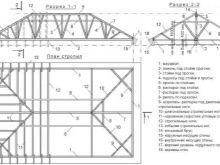
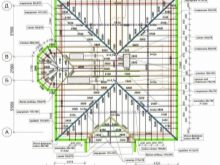
The advantage is obvious: installation is carried out without specialized tools, and the material is relatively cheap and reliable for a long time. The hip roof is used relatively rarely, because its equipment is complicated and expensive, sometimes it requires the involvement of specialists. But in terms of reliability and stability after installation, such a scheme has no equal analogues. In addition, it is considered the most attractive in "appearance" and perfectly withstands even strong gusts of wind.
Log houses with a garage are planned in such a way that a built-in or annexed parking lot protects the coldest part of the house from the outside.
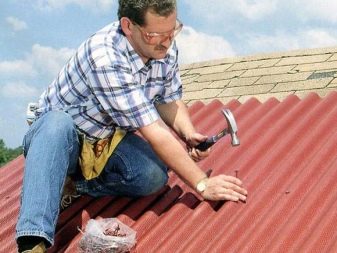
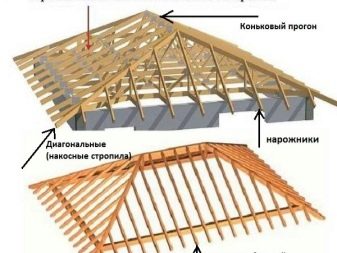
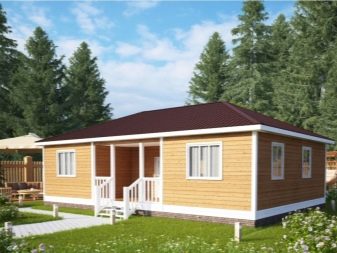

Important: roof structures should be made lightweight, since the bearing capacity of the walls is relatively weak. Excessive loading almost inevitably leads to deformation of both the joists and the rafters. The calculation of the probable overloads of the structure is necessarily carried out. The rafter system is assembled thanks to the grooves and protrusions prepared in advance. Next, the side bars of the upper row are mounted, for their bundle, a bar with a section of 15 x 10 cm is used.
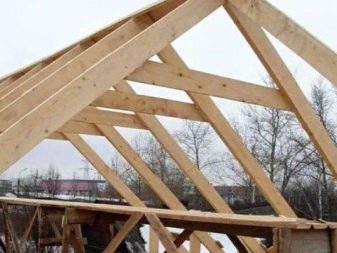

Construction
It is quite easy to build a one-story house from a bar with your own hands.Most professionals suggest using a 150 x 150 mm beam for this purpose, however, if the goal is to save money and refuse to hire workers, you can reduce one edge to 100 mm. When choosing a suitable base for a log house, you should be guided by the instructions of specialized literature. But this does not mean that you can ignore the information received from neighbors and from the previous owners of the site. If the risk of heaving is small and the water lies deep under a wooden house, even light supports can be placed in the house.
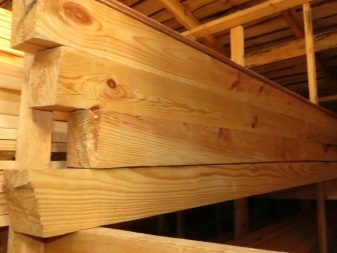
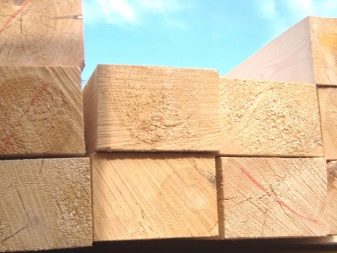
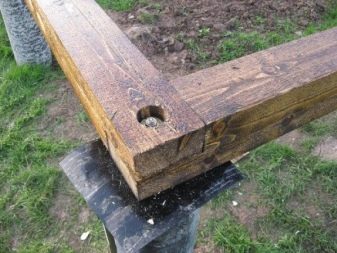
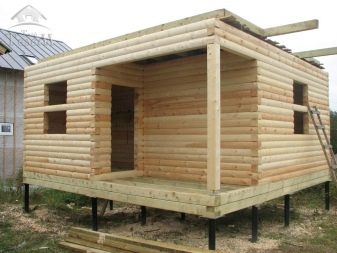
Mixing concrete by hand takes too much time, it is much more practical to use inexpensive concrete mixers. Buying them will be repeatedly justified after a while. When pouring the ground part of the tape, it is required to use a solution of increased density and mount a reinforcing frame. The crowns of the timber are tied with wooden dowels to save money, you can even take for them scraps of boards left over from previous construction (but, possibly, from a more durable tree). All gaps of the crowns are filled with special heaters.
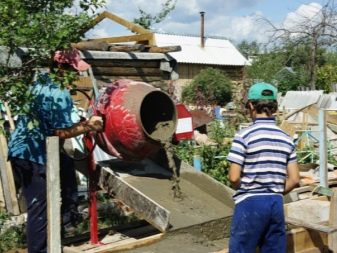

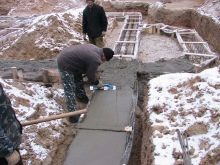

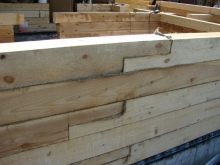
Here you will have to choose either more expensive and practical solutions (ready-made rolls), or money-saving and labor-intensive sphagnum moss. To form jambs, only flat bars are required, preferably without a single knot. When performing this work, you should focus on the simplest technology, because not every woodworking professional can handle a full-fledged recipe. To make the processing of the timber easier, a workbench is necessarily used.

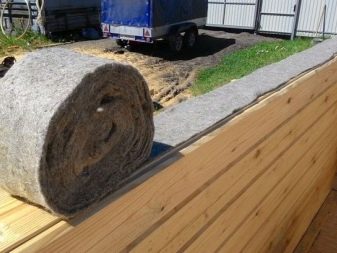
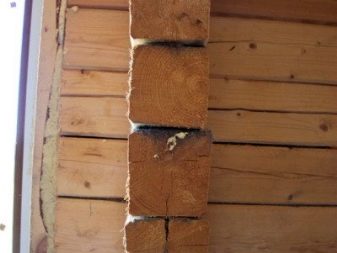
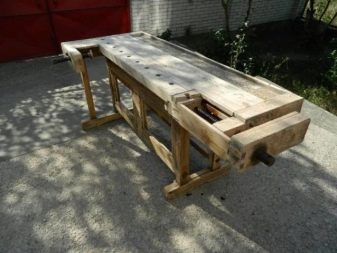
The initial crown is made "in half a tree", for work it is required to use circular saws. If depth is not enough, hacksaws are used. Leaving gaps between elements is quite reasonable, they will allow you to organize airflows. Placing them at a certain height above the ground increases the ventilation efficiency. The linings are placed because after the planks have rotted, the replacement will be easier than for the lower rims.
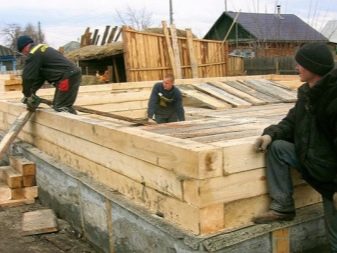

Tips & Tricks
Regardless of the type of wood chosen, it is worth using only the material with the lowest possible moisture. Glued timber is much more profitable and more practical than an unprepared option. What is very good, it is not only easier to build from it, but precipitation is also excluded. When they take ordinary unprepared wood, the frames of doors and windows are equipped with special grooves that give a uniform draft.
When ordering commercial construction and design services, you should pay maximum attention to the prepared documentation.
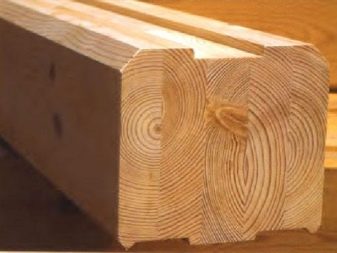
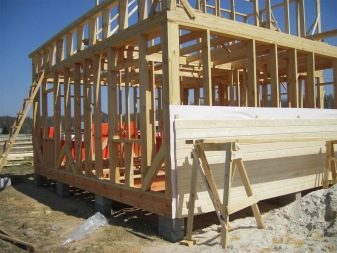
Beautiful options
The style of a log house does not have to be in the spirit of a chalet. Here is one good light project. Beige walls set off the refined red roofing favorably. The porch and the corridor behind it divide the dwelling into two approximately equal parts. One of them is set aside for housing, the other for technical needs, which can be seen at least by the size of the windows.
A construction that is closer in color to its parts is shown in this photo. The whimsical light gray roof matches the façade, which is adorned with graceful custom elements. A roof raid over the outer contour of the house allows you to create an impromptu terrace. The porch is not high, and the color of the walls was intentionally made discreet. Here the approach is slightly different: instead of a complex interweaving of facade elements, a cruciform support element was used.
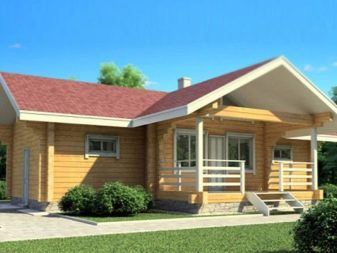
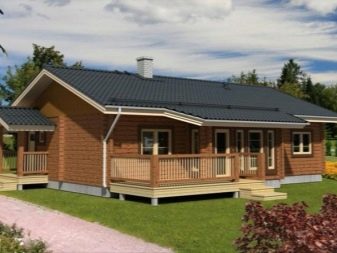
The calm white wood of the main structure is complemented by visually graceful railings along the edges of the makeshift terrace. A deep blue roofing material on two slopes is the main color accent in this solution. And here the walls and the roof are made in the same color. On the other hand, the facade, although covered again under the roofing structure pushed forward, is more elegant. Even the downpipe attracts attention; dark window frames harmonize visually with an even darker base / plinth finish; the color of the steps on both porches is the same.
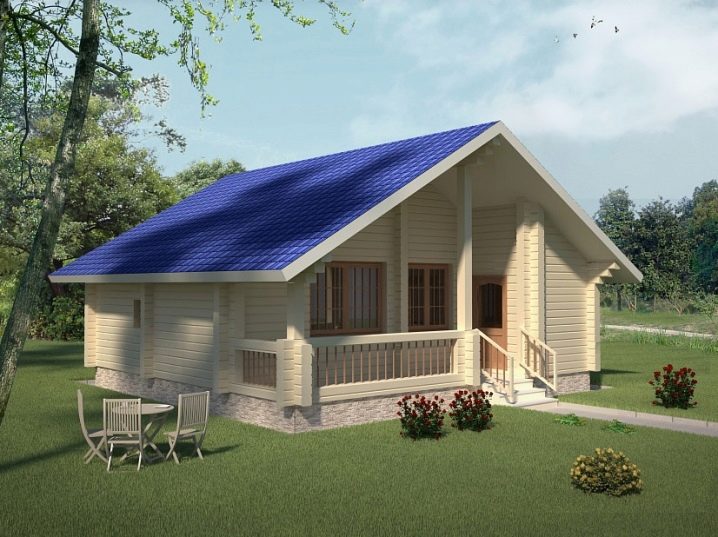
For information on how to build a house from a bar, see the next video.













The comment was sent successfully.